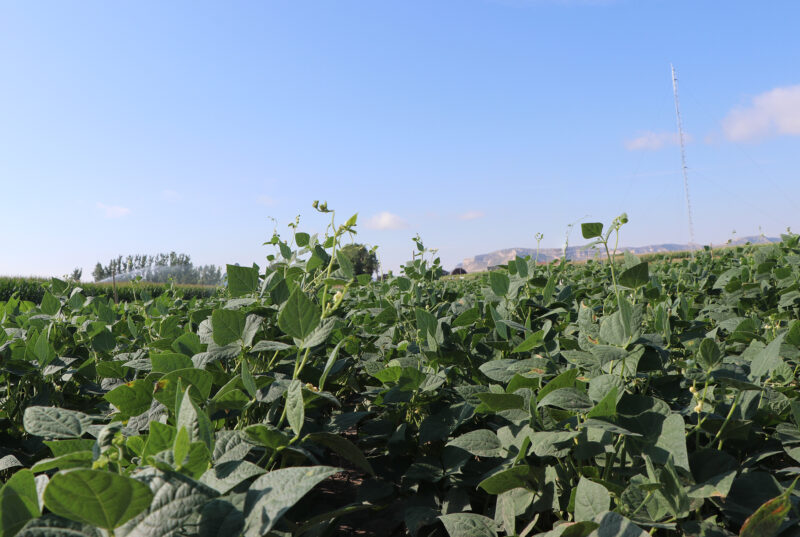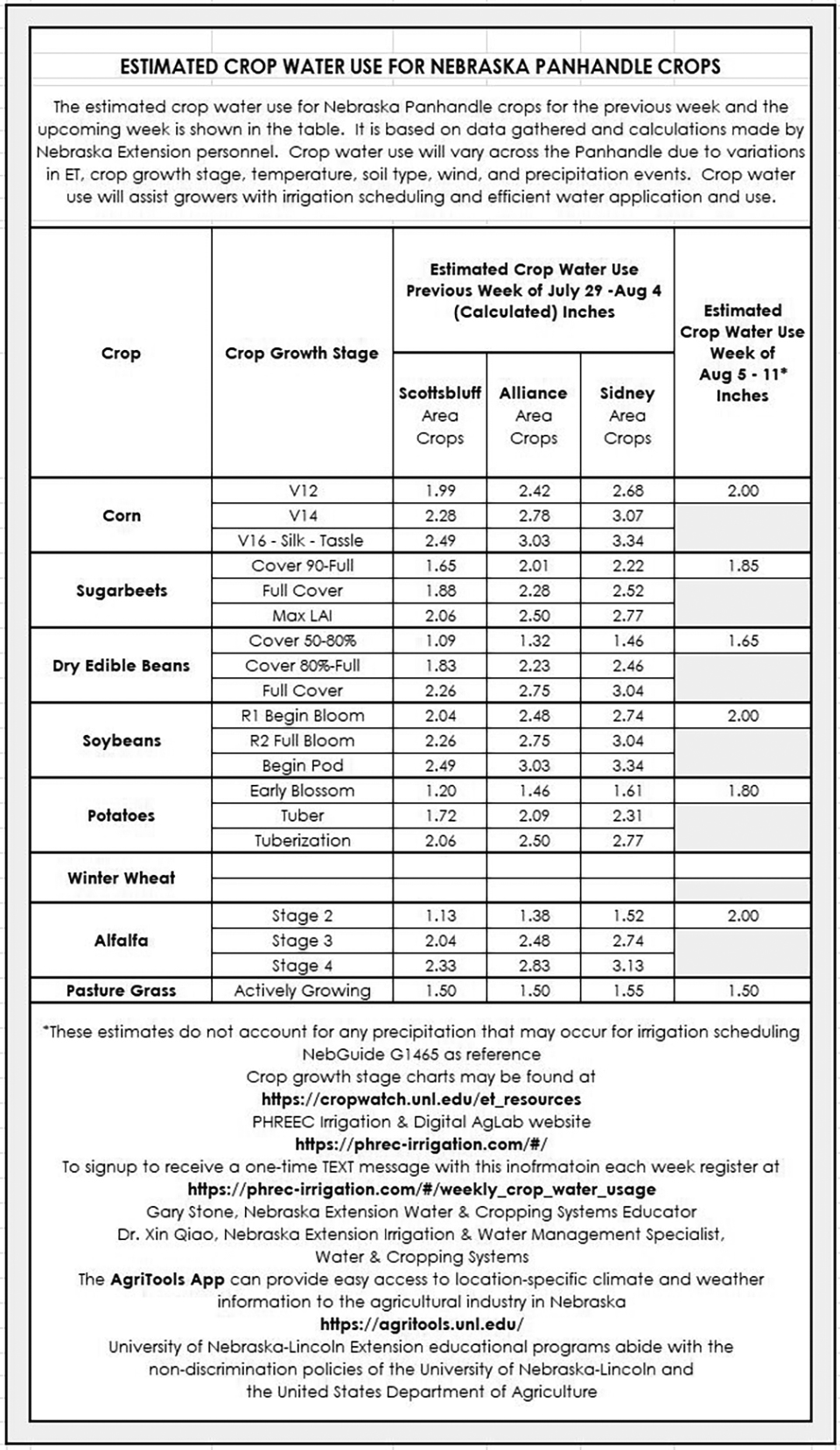![]()

By Chabella Guzman, PREEC communications / Gary Stone, Nebraska Extension educator
Pea-sized hail and wind gusts of up to 60 mph on Friday, Aug. 2, cut through the bean fields and other crops in the Mitchell Valley.
“We were pummeled by the storm,” said Paul Pieper, a bean grower northeast of Mitchell. The National Weather Service in Cheyenne, Wyo., said the severe thunderstorm on Friday also caused hail of about an inch in Henry and wind gusts of 65 mph in Harrisburg.
The dry bean crop has been blossoming, but many acres had to be replanted after another hailstorm earlier in the summer. “The bean crop planted early and watered look good,” Pieper said. “The heat does seem to be stalling the plants, dropping blossoms.”
He added the beans planted later don’t look as good. “They will need a long fall to bring them to harvest. So, I think the bean crop will be average and not a bumper one this year.”
While the dry bean crop is undergoing challenges, “overall, the crops across the Panhandle are doing well,” said Gary Stone, Nebraska Extension educator. “Chances of precipitation will increase from mid-week through the weekend, and the corn is tasseling and silking.”
Irrigation water deliveries continue across the North Platte Valley, with Pathfinder diverting approximately 1,800 cfs and Goshen/Gering-Fort Laramie irrigation district diverting approximately 1,400 cfs.

Assisting growers with monitoring their crop’s water profile is the – Estimated crop water use for Aug.5-11. The table information includes the estimated crop water use for Nebraska Panhandle crops for the previous week and the upcoming week. The table is based on data gathered and calculations made by Gary Stone, Nebraska Extension educator, and Dr. Xin Qiao, Extension Irrigation and Water Management Specialist, both based at the UNL Panhandle Research and Extension Center in Scottsbluff.
Crop water use will vary across the Panhandle due to variations in ET, crop growth stage, temperature, soil type, wind, and precipitation events. Crop water use will assist growers with irrigation scheduling and efficient water application and use.
